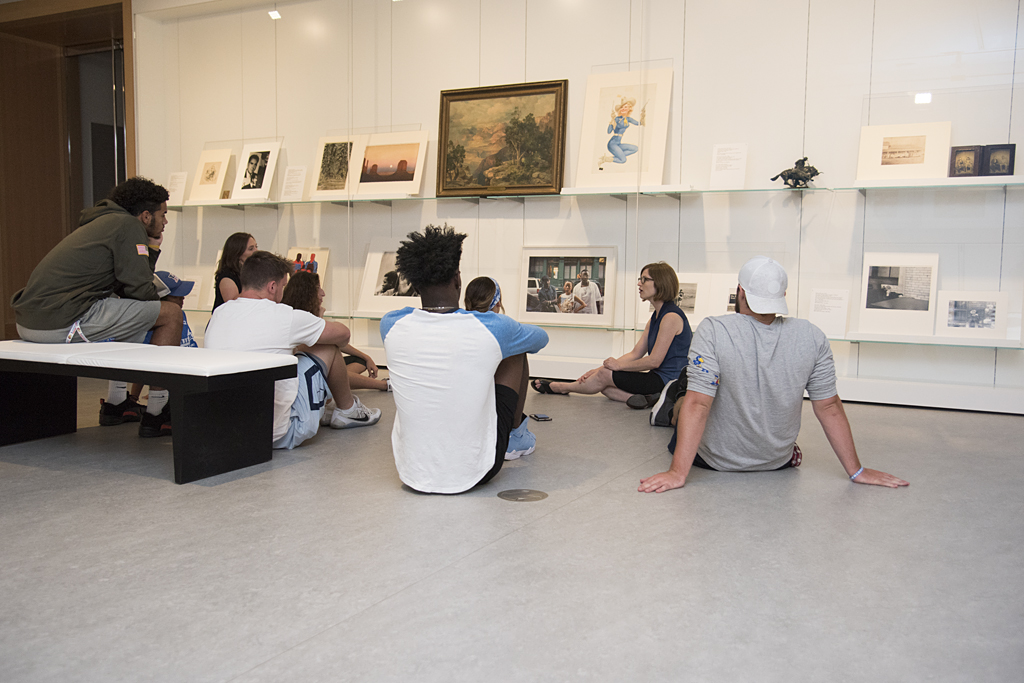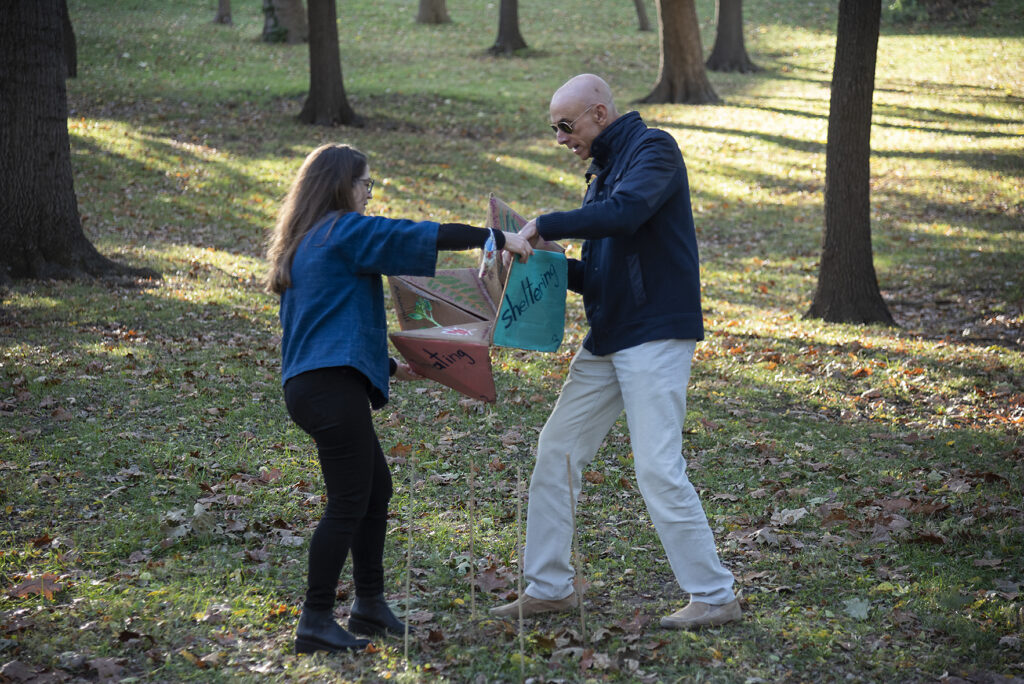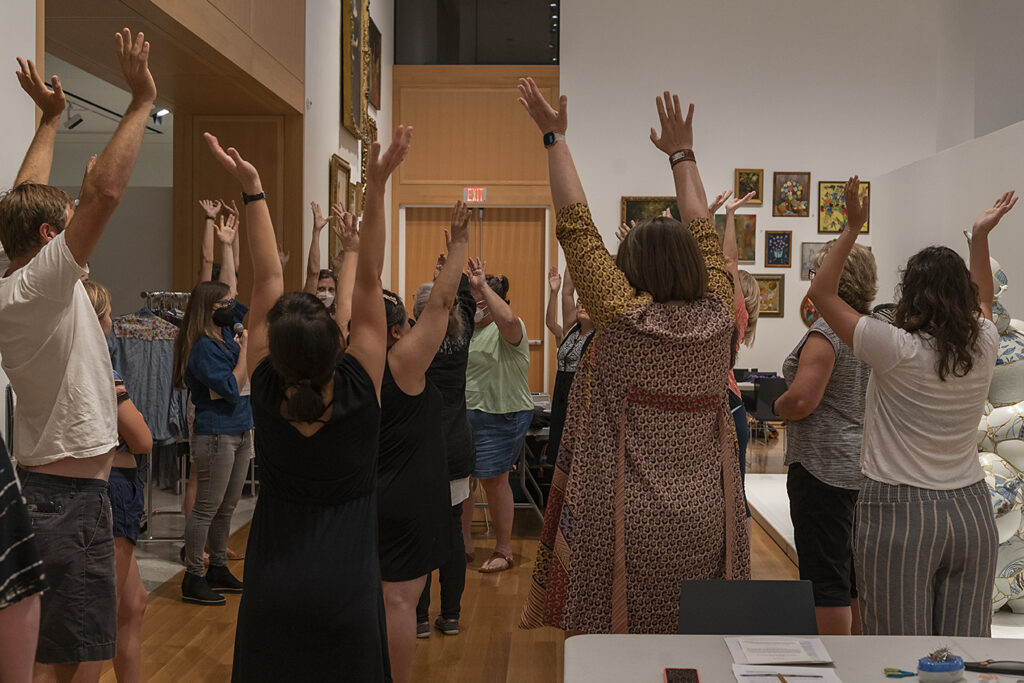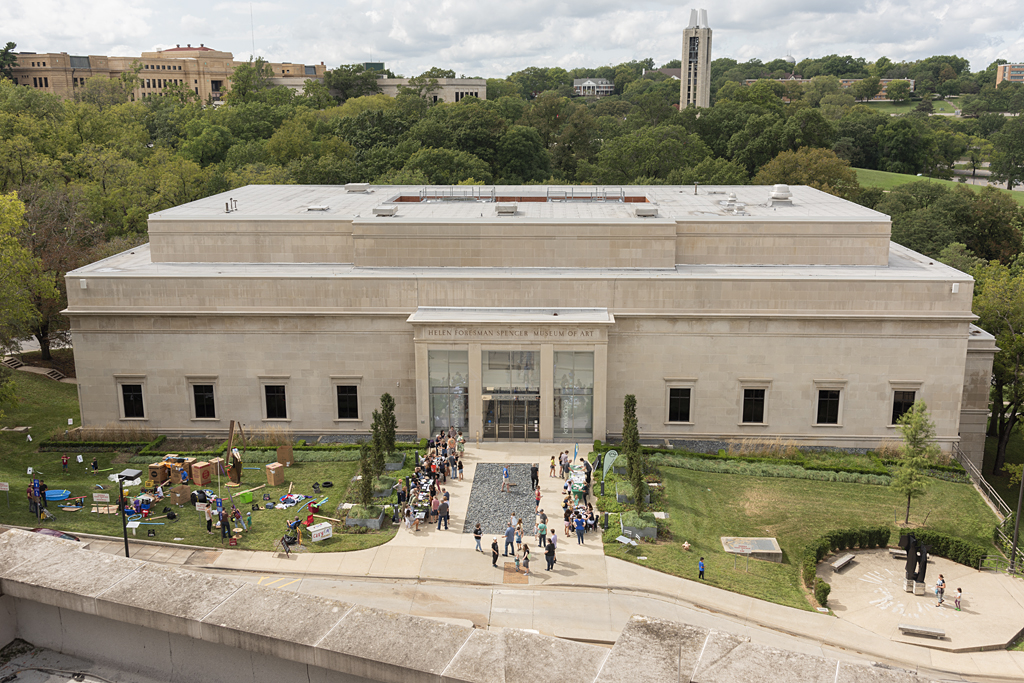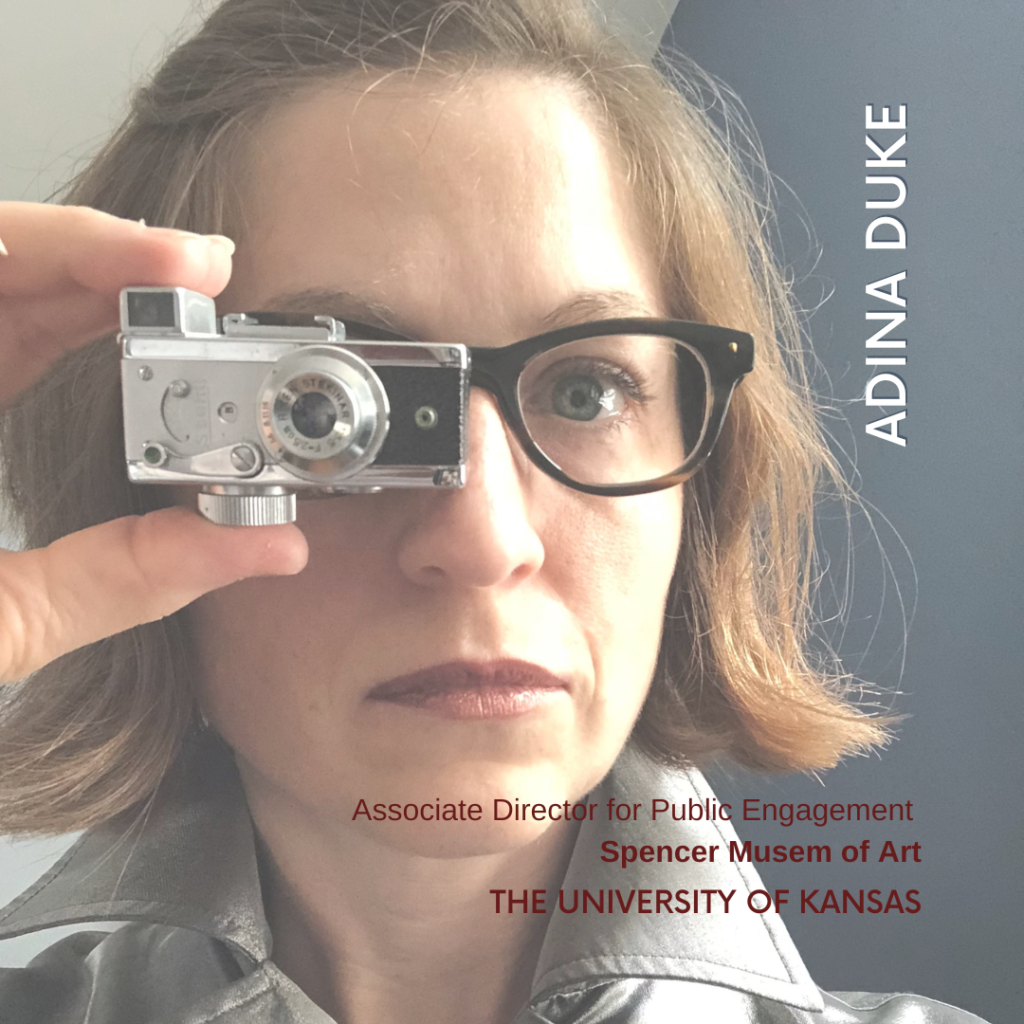
Adina Duke is the Associate Director of Public Engagement for the Spencer Museum of Art at The University of Kansas.
What’s one thing — either industry/work-related or not — you learned in the past month?
While caring for my grandmother, I learned how to change wound dressings containing calcium alginate, a material derived from seaweed that promotes platelet aggregation and tissue regeneration. I also drew on gallery teaching tools to expand her life-space: I brought to her bedside various ceramic objects and puppets her mother had made so that she could run her hands over their familiar contours while I shared stories about them that she had shared so many times with me.
What do you value about your membership with AAMG?
Being involved in AAMG means we are connected to a vast yet intimate network of colleagues who eagerly and generously share their wisdom and experience, their questions and quandaries to strengthen the role of academic museums and galleries on campus and in their communities. This year, I am particularly excited that KU is hosting the AAMG national conference. We look forward to welcoming colleagues to Lawrence and to sharing collections from across campus with all of you.
If you could trade places with anyone for a day, who would it be?
My niece or nephew, both of whom are on the Autism spectrum, but have very different talents and challenges. I often wish I could better understand how they experience the world.
Coffee or Tea?
Strong Italian coffee with sugar and cream to start the day, then again mid-afternoon for momentum.
Book/Author suggestion?
I just finished Brian Selznick’s Kaleidoscope, a curious series of vignettes, each refracting lessons of love, loss, and wonderment. I’ll be cracking open his new book, Big Tree, tonight.
What did you want to be when you were growing up?
An Olympic gymnast (floor specialist), but it wasn’t long after I gave that up for the prospect of a life in museums. I come from a family of teachers and journalists–storytellers and truthtellers–so aspects of those professions are in my DNA.
What do you enjoy most about being a part of an academic museum?
I especially value the reciprocal learning that happens in our spaces every day and contributing to a continually shifting, interdisciplinary lens through which all people can learn about and understand themselves, this world, and one another. Being in a teaching museum within a university, I feel we have great license to experiment and, thus, capability to effect change not only within the museum field, but perhaps in the fields of our university and community collaborators and partners.
What are your hopes for our industry?
I am encouraged by the ways museums have begun to open up and the investments now being made to build, repair, and sustain trust and achieve greater equity. But that work demands constant tending and does not have an end date. I hope the academic museum of the future is a better mirror of the communities and constituents we serve. Likewise, with such rapid changes and disruptions to campus life in recent years and with increasing reliance on technology in higher ed, the academic museum can play an ever greater role in bringing people together for learning, research, and dynamic social engagement. How might we adapt our facilities, programs, exhibition design, staffing, and more to support these needs?
Bonus: Do you have a favorite joke to share?
Where do you keep the prize for the best palindrome?
In the “Reward Drawer”

